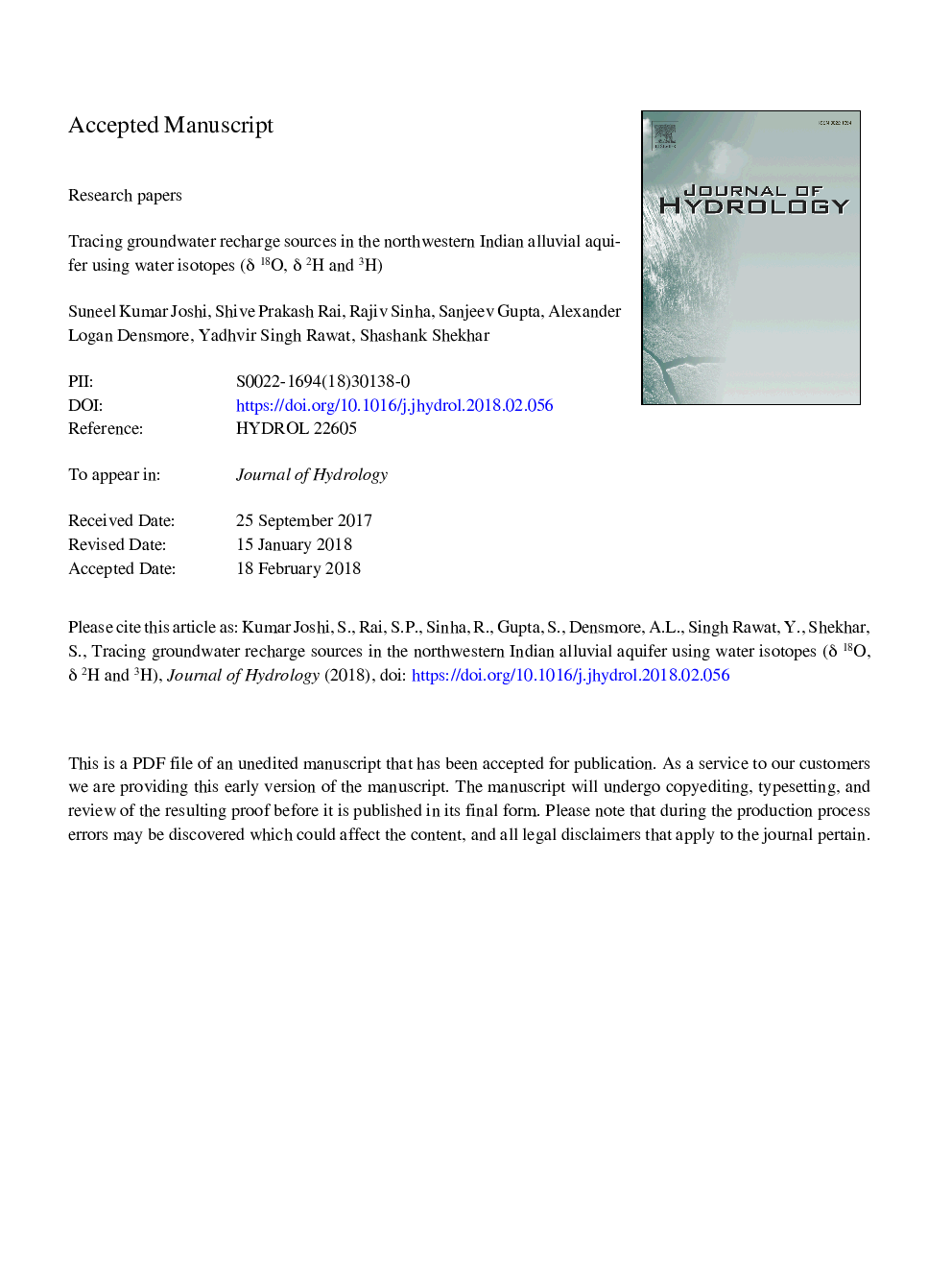| Article ID | Journal | Published Year | Pages | File Type |
|---|---|---|---|---|
| 8894946 | Journal of Hydrology | 2018 | 48 Pages |
Abstract
Rapid groundwater depletion from the northwestern Indian aquifer system in the western Indo-Gangetic basin has raised serious concerns over the sustainability of groundwater and the livelihoods that depend on it. Sustainable management of this aquifer system requires that we understand the sources and rates of groundwater recharge, however, both these parameters are poorly constrained in this region. Here we analyse the isotopic (δ18O, δ2H and tritium) compositions of groundwater, precipitation, river and canal water to identify the recharge sources, zones of recharge, and groundwater flow in the Ghaggar River basin, which lies between the Himalayan-fed Yamuna and Sutlej River systems in northwestern India. Our results reveal that local precipitation is the main source of groundwater recharge. However, depleted δ18O and δ2H signatures at some sites indicate recharge from canal seepage and irrigation return flow. The spatial variability of δ18O, δ2H, d-excess, and tritium reflects limited lateral connectivity due to the heterogeneous and anisotropic nature of the aquifer system in the study area. The variation of tritium concentration with depth suggests that groundwater above c. 80â¯mbgl is generally modern water. In contrast, water from below c. 80â¯mbgl is a mixture of modern and old waters, and indicates longer residence time in comparison to groundwater above c. 80â¯mbgl. Isotopic signatures of δ18O, δ2H and tritium suggest significant vertical recharge down to a depth of 320â¯mbgl. The spatial and vertical variations of isotopic signature of groundwater reveal two distinct flow patterns in the aquifer system: (i) local flow (above c. 80â¯mbgl) throughout the study area, and (ii) intermediate and regional flow (below c. 80â¯mbgl), where water recharges aquifers through large-scale lateral flow as well as vertical infiltration. The understanding of spatial and vertical recharge processes of groundwater in the study area provides important base-line knowledge for developing a sustainable groundwater management plan for the northwestern Indian aquifer system.
Related Topics
Physical Sciences and Engineering
Earth and Planetary Sciences
Earth-Surface Processes
Authors
Suneel Kumar Joshi, Shive Prakash Rai, Rajiv Sinha, Sanjeev Gupta, Alexander Logan Densmore, Yadhvir Singh Rawat, Shashank Shekhar,
